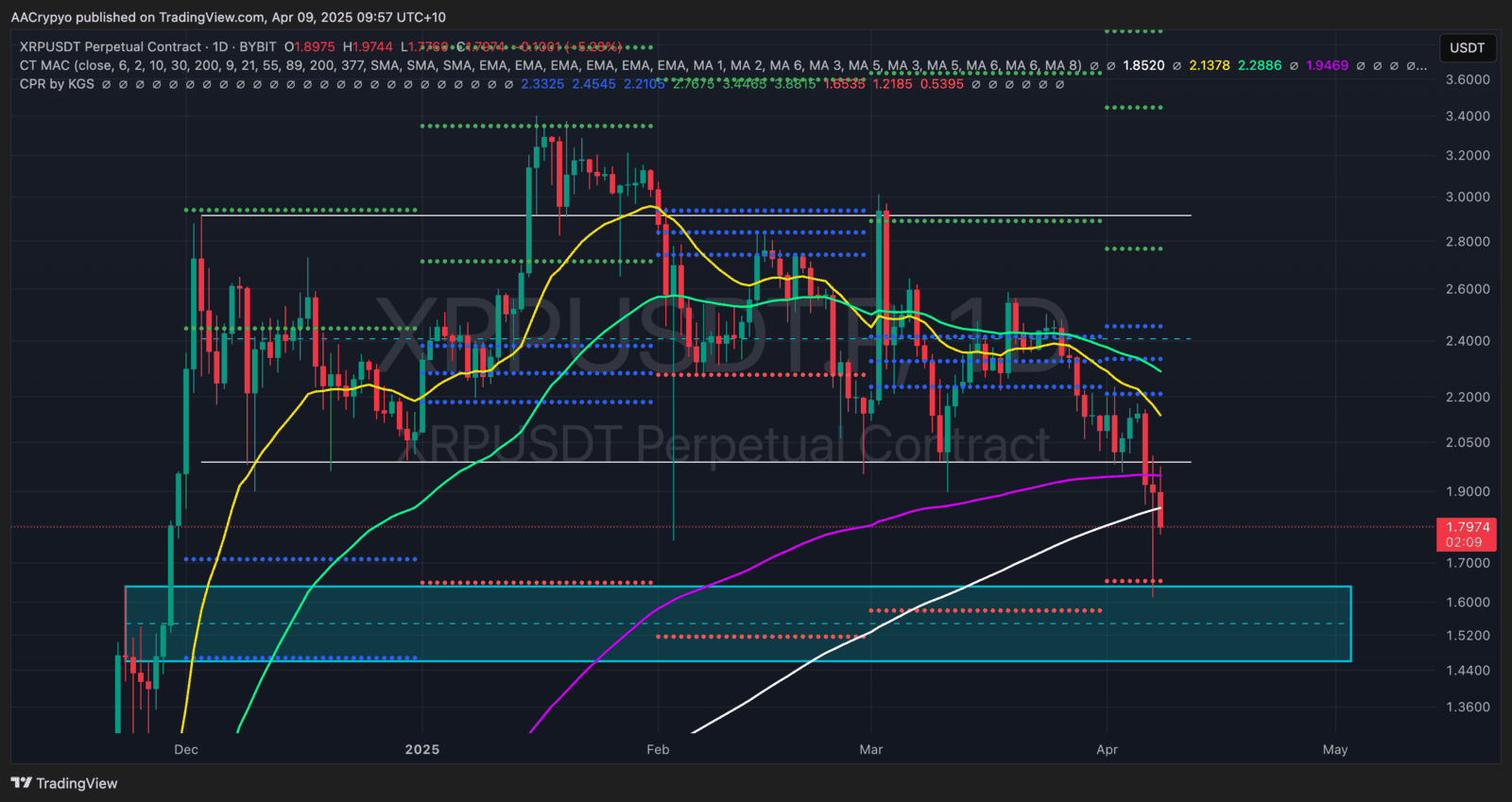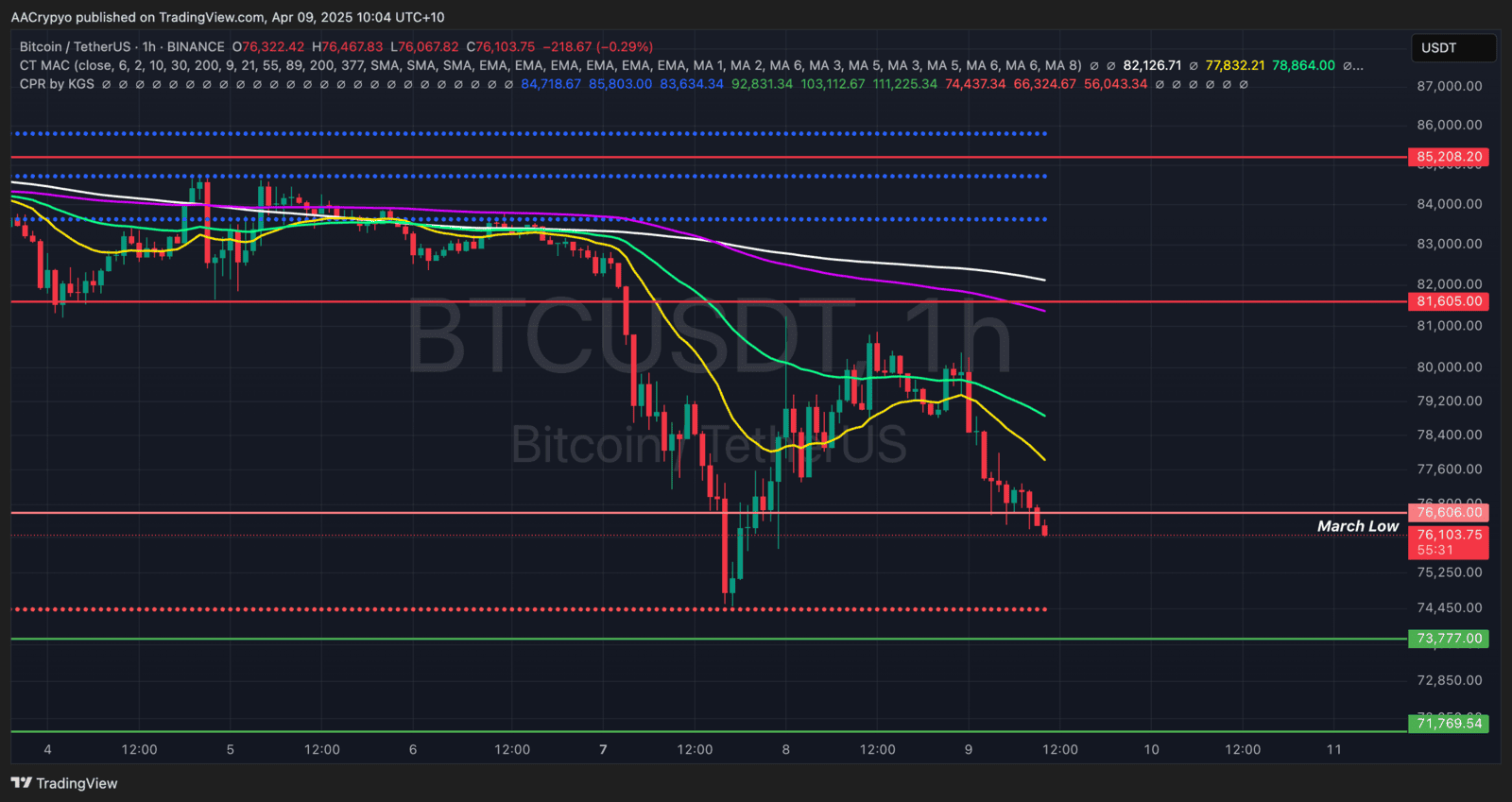Markets continued to bleed following textbook bull trap reversals across the board yesterday. A bull trap occurs when price action moves higher—seemingly showing strength and luring investors in—only to reverse sharply, trapping late entries. This pattern played out across Bitcoin, the S&P 500, and even Gold.
Bitcoin opened the day below $80K but showed early signs of strength, moving 2% higher and nearly retesting $81K. Gold also posted gains, trading back above $3,000 and up 1.36%. Momentum appeared bullish across risk and safe-haven assets alike, and the S&P 500 even opened the US session 4% higher than the previous day’s close.
But the optimism didn’t last.
In the first hour of the US session, the S&P 500 saw five consecutive red hourly candles, shedding 5% and erasing all gains from the open. Gold surrendered its advance and closed flat, while Bitcoin reversed hard—now trading back below March’s low and down 3.37% on the day. That’s a 5% swing from the intraday high. A clear bull trap, which tends to materialise during broader bearish market conditions.
This marks the fourth consecutive red day for the S&P 500, down a brutal 12.14% over this period—officially back in bear market territory. It’s now the 11th largest uninterrupted four-day drop for the index since 1940. Comparable only to periods like 2020 (Covid crash), 2008 (Global Financial Crisis), and 2001 (Dot-com bubble). Brutal chapters in market history—but also rare opportunities for accumulation.
Bitcoin, of course, didn’t exist in 2001 or 2008, but it was very much present for the Covid crash. In March 2020, it dropped a staggering 38.97% in a single day. Fast forward to now: while the S&P 500 has mirrored the kind of performance we saw during those crisis periods, Bitcoin is showing comparative resilience—down just 10% over the same stretch the S&P has fallen 12.14%. A subtle but important signal of Bitcoin’s strength in macro uncertainty.
Looking ahead, further volatility seems likely. With China refusing to lift tariffs on the US, the additional 104% US tariffs on Chinese goods are set to go live tomorrow—an event likely to ripple through markets overnight. Adding to the mix, US CPI numbers are also due tomorrow night.





